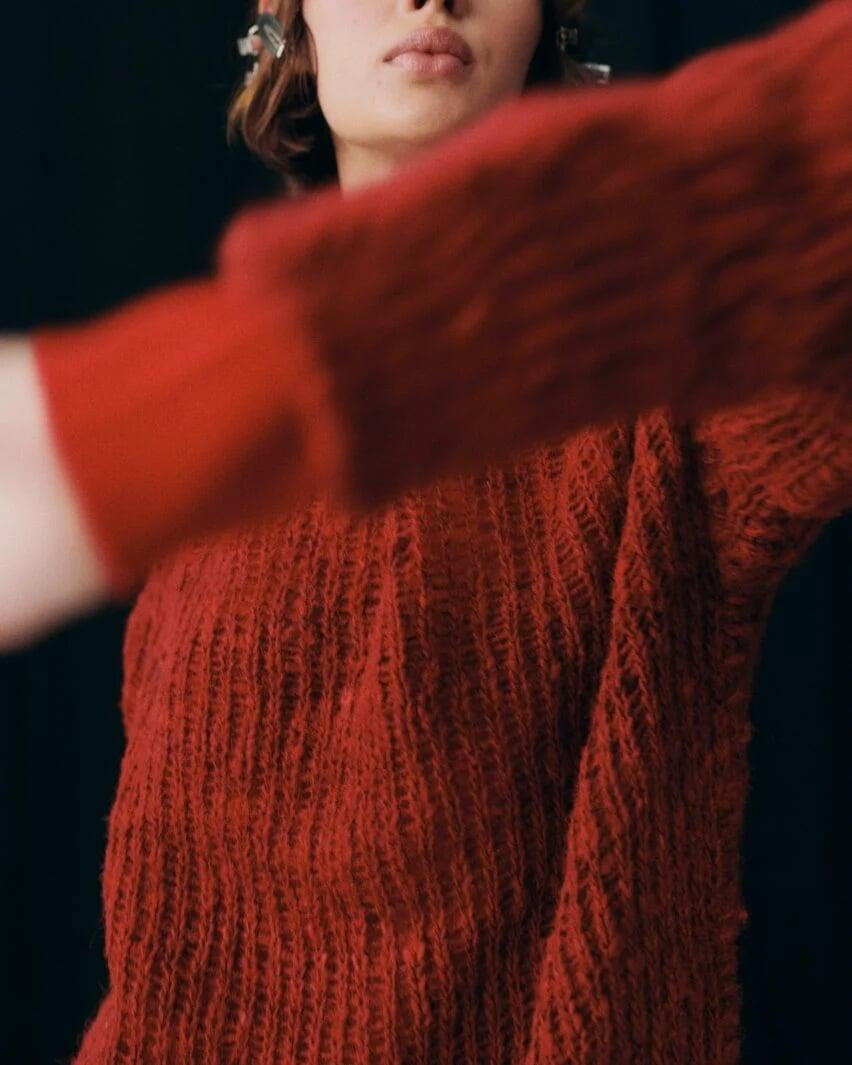Dutch company Human Material Loop is using an unusual source of waste to create a zero-carbon wool alternative that doesn't require land or water: human hair. Human Material Loop works with participating barbers to collect hair clippings and process them into yarns and textiles, and sometimes into clothing.
Founder and CEO Zsofia Kollar was initially interested in human hair from what she calls a "cultural and sociological" point of view, before she began to explore its material properties.
Elsewhere, human hair pads are used to wipe up oil spills and to to create biodegradable stools but Kollar has made the textile industry the best goal of her quest. "The textile industry is not only one of the largest markets in our economy, it's also one of the most environmentally taxing." Kollar said.
"Throughout history, we've used a variety of animal fibers in textiles, but our own hair, which consists of the same keratin as wool, is often overlooked," she continues." Why not treat human hair like any other valuable textile fiber?"
According to Kollar, the use of human hair eliminates one of the main sources of greenhouse gas emissions from the textile industry: growing cotton or raising sheep for raw materials like wool. She points out that waste hair does not degrade any soil, does not require any pesticides, does not pollute any water sources, and does not produce any greenhouse gas emissions.
At the same time, the properties of hair make it very popular. It is very flexible, has a high tensile strength, acts as a heat insulator and does not irritate the skin.
Human Material Loop specializes in the development of technologies to process hair for integration into standard machines for yarn and textile production. The company has made staple fiber yarn - a type of yarn made by twisting staple fibers together - from waste hair and is developing several textiles. It has also made several complete costumes, most recently a red sweater-like garment made in collaboration with Henkel, the owner of the Schwartzkopf hair care brand.

The dress was designed to be displayed at hairdressing events as part of an initiative to promote discussion on alternative salon waste management ideas.
Kollar said seeing such a finished product helps alleviate the discomfort or aversion many people feel when using human products. "It's amazing how ordinary the material looks, similar to any other textile," she said. "When people touch and feel the fabric, a marvelous transformation occurs. Their initial skepticism disappears, giving way to a subconscious acceptance of the material."
"Rejection usually comes from people who have only heard about it and never seen the dress itself," she continues. "It's a testament to the power of first-hand experience in reshaping perceptions."
Human Material Loop will also target the architectural and interior products market, Kollar said, adding that she believes hair's moisture resistance, antimicrobial properties, and acoustic and thermal attributes will make it an attractive proposition. The company plans a commercial pilot in 2024 and aims to create a comprehensive fabric library for brands and designers.

